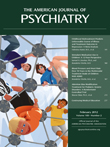Stimulant Medication Use in Children: A 12-Year Perspective
Abstract
Objective:
The authors examined the utilization of stimulant medications for the treatment of ADHD in U.S. children during the period 1996–2008 to determine trends by age, sex, race/ethnicity, family income, and geographic region.
Method:
The 1996–2008 database of the Medical Expenditure Panel Survey, a nationally representative annual survey of U.S. households, was analyzed for therapeutic stimulant use in children age 18 and younger. The data for 1987 were also recalculated for reference.
Results:
An estimated 3.5% (95% confidence interval=3.0–4.1) of U.S. children received stimulant medication in 2008, up from 2.4% in 1996. Over the period 1996–2008, stimulant use increased consistently at an overall annual growth rate of 3.4%. Use increased in adolescents (annual growth, 6.5%), but it did not significantly change in 6- to 12-year-olds, and it decreased in preschoolers. Use remained higher in boys than in girls, and it remained consistently lower in the West than in other U.S. regions. While differences by family income have disappeared over time, use of stimulants in ADHD treatment is significantly lower in racial/ethnic minorities.
Conclusions:
Overall, pediatric stimulant use has been slowly but steadily increasing since 1996, primarily as a result of greater use in adolescents. Use in preschoolers remains low and has declined over time. Important variations related to racial/ethnic background and geographic region persist, thus indicating a substantial heterogeneity in the approach to the treatment of ADHD in U.S. communities.



